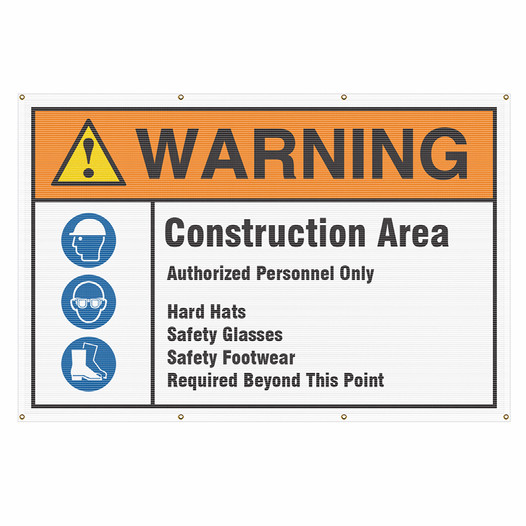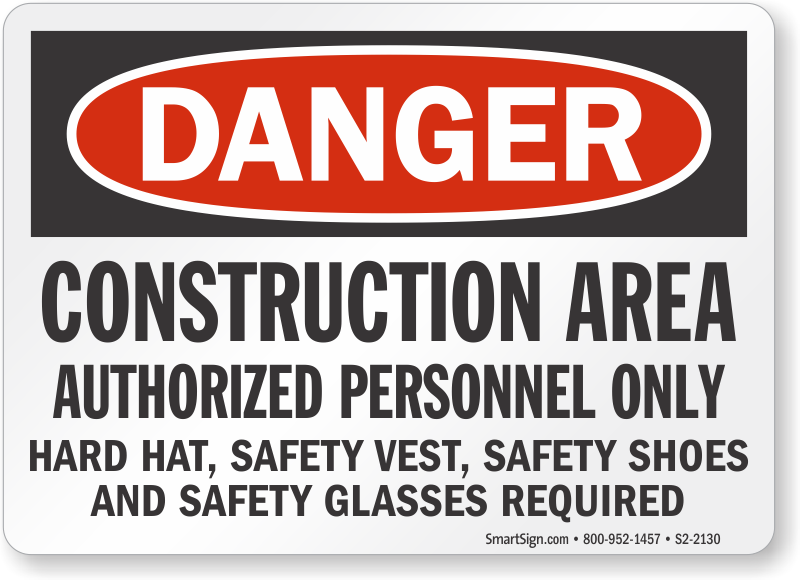Construction Signs: Vital Signage for Safe and Effective Work Sites
Wiki Article
An Extensive Introduction of Safety Indicators and Their Performance in Communicating Risks and Safety And Security Methods
Security signs play a crucial function in making certain awareness and conformity within numerous atmospheres, from industrial setups to public areas. By categorizing indications into types such as warning, mandatory, and prohibition, they efficiently communicate details dangers and required activities. The style principles regulating these indications, including color usage and symbol standardization, improve their functionality and access. Recognizing the regulatory requirements that underpin these aesthetic help is important for fostering a society of security. The implications of these signs extend past plain conformity, motivating a better examination of their influence on work environment security and threat mitigation.Sorts Of Security Signs
In various settings, understanding the kinds of safety indications is crucial for guaranteeing the health of people. Safety and security indicators are categorized largely into 4 kinds: indication, obligatory indications, restriction signs, and emergency situation indications. Each type offers a distinct function in interacting vital details.Indication, typically yellow with black symbols, sharp individuals to potential risks or unsafe conditions, such as slippery floorings or dropping objects - Construction Safety Signs. These signs are essential for avoiding mishaps by educating people of dangers they may experience
Compulsory indicators, blue and often round, show actions that need to be taken to make certain safety, such as wearing individual protective equipment or complying with specific safety and security procedures. Compliance with these indications is important for keeping a secure setting.
Prohibition indicators, characterized by a red circle with an angled line, show actions that are not enabled, such as "No Smoking cigarettes" or "Do Not Get in." These indications help to stop harmful behaviors that could lead to injuries or mishaps.
Lastly, emergency indications, usually green, offer directions for emergency departures and safety equipment locations. Their clear presence and prompt acknowledgment are important during emergencies, promoting swift and secure discharges.
Style Concepts of Safety And Security Signs
Effective design concepts of security indicators are crucial for making certain that they communicate info promptly and plainly to individuals in different settings. The main objective of a security sign is to communicate possible threats and needed precautions, and this can be accomplished through a series of essential layout components.First, color plays a crucial role in sign recognition. Details colors are universally related to specific meanings; for instance, red indicates risk or restriction, while environment-friendly indicates safety and security or permission. The usage of clear, clear fonts makes certain that the info can be read from a distance. Vibrant typography is suggested, with a minimum font size that sticks to presence standards.
Symbols and symbols must be globally recognized and quickly identifiable, frequently employing basic pictograms that go beyond language obstacles. Additionally, the format must be logical, placing one of the most critical details at eye level and preventing clutter to improve comprehension. Sturdiness and weather condition resistance are essential for outside indicators, guaranteeing that they preserve exposure and effectiveness under different problems. By sticking to these style concepts, security signs can successfully meet their function of promoting understanding and security in varied setups.
Capability and Interaction

Efficient interaction via security indications depends on global symbols and standard language. This approach reduces misunderstandings and offers clear assistance throughout diverse populaces, including those with varying degrees of language efficiency. For instance, an easy red circle with a diagonal line globally conveys "restriction," while an environment-friendly square indicates safety and security or permitted activities.
In addition, the critical positioning of safety indicators in risky areas additionally boosts their performance. By positioning indications where they are most required, organizations can much better protect against mishaps and advertise a society of safety and security. The integration of reflective materials and illuminated signage also plays an essential role in guaranteeing visibility under various problems, therefore strengthening the importance of these vital interaction tools in keeping a secure atmosphere.

Regulatory Requirements and Conformity
Countless regulatory criteria govern the layout, placement, and maintenance of safety and security signs to guarantee compliance and improve public safety. These requirements are established by numerous organizations, including the American National Standards Institute (ANSI) and the Occupational Security and Health Management (OSHA), which supply guidelines on the specs for shades, materials, and symbols made use of in safety signs.Compliance with these criteria is crucial as it not only fosters a safe environment yet also lessens lawful liabilities. For example, safety and security indicators need to be conspicuously placed in locations where hazards exist and ought to be preserved in a readable and noticeable condition. Using standard symbols and language aids in lowering confusion and makes certain that the designated message is effectively connected to a varied target market.
Additionally, companies are needed to carry out routine audits and inspections of their safety signs to guarantee recurring compliance with applicable policies. Failure to abide by these standards can result in fines, boosted threat of accidents, and compromised safety and security for employees and the general public. Therefore, understanding and carrying out governing standards is vital for any entity intending to prioritize safety and security via reliable interaction.
Value in Work Environment Safety
Acknowledging the important function security indicators play in Building Site Signs workplace safety and security is essential for fostering a safe workplace. Construction Safety Signs. These indicators function as visual cues, effectively communicating needed precautions and prospective dangers to site visitors and workers alike. By supplying clear info, safety and security indicators lessen the risk of accidents and injuries, ensuring that workers recognize their environments and the linked threatsThe importance of safety indicators expands past simple compliance with guidelines; they are integral to growing a safety-oriented society within the organization. Regular use properly designed indicators reinforces safety protocols, urging employees to embrace safe techniques and remain alert. This positive technique not just secures individuals yet also improves total efficiency by lowering downtime connected with crashes.
Additionally, security signs are vital throughout emergency scenarios. Spending in quality security signs is a fundamental facet of any kind of detailed work environment security approach, mirroring a company's dedication to prioritizing the health of its workforce.
Final Thought

By adhering to these style principles, safety indications can successfully accomplish their objective of promoting recognition and security in varied settings.
Acknowledging the vital role safety indicators play in office security is necessary for promoting a safe and secure job atmosphere. Investing in top quality security signs is an essential element of any extensive office safety and security method, mirroring a company's commitment to focusing on the wellness of its workforce.
In conclusion, safety indicators play a vital role in conveying threats and safety and security procedures throughout different settings. Ultimately, the efficient application of safety indications adds substantially to risk reduction and the promo of a society of safety and security within organizations.
Report this wiki page